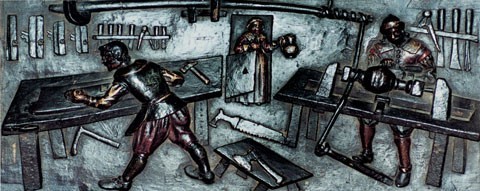
Carved panel depicting the interior of a woodworking shop, probably England, 1590– 1620. Oak. 14 1/2" x 28 1/2". (By permission of John Stent of Shere.)
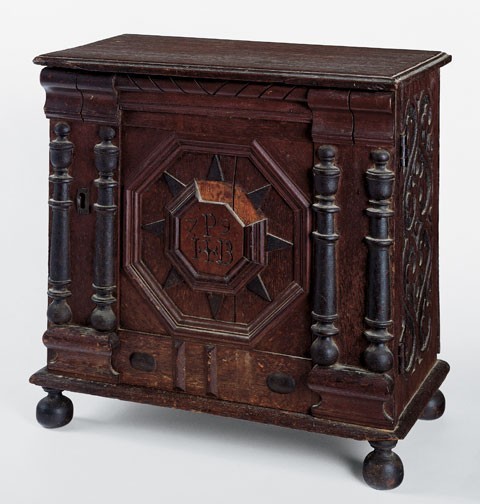
Cabinet attributed to the Symonds shops, Salem, Massachusetts, 1679. Red oak, black walnut, and maple with white pine. H. 16 3/8", W. 17", D. 9 1/2". (Courtesy, Peabody Essex Museum; photo, Gavin Ashworth.)

Detail of the back of a drawer from the cabinet illustrated in fig. 2. Tears from riving are present along the lower edge of the back.
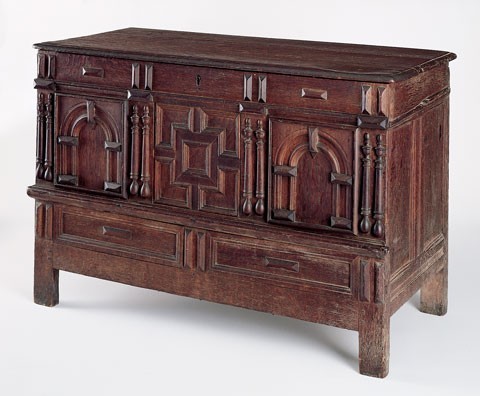
Chest, Boston, Massachusetts, 1660–1690. Oak, cedrella, and walnut with oak and white pine. H. 30 1/2", W. 45", D. 20 1/2". (Chipstone Foundation; photo, Gavin Ashworth.)

Detail of the upper rear rail of the chest illustrated in fig. 4.
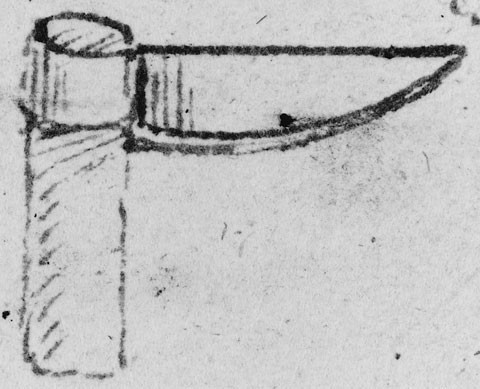
Randle Holme, drawing of a “lath axe” (froe), England, ca. 1688. (Courtesy, ©British Library Board.)
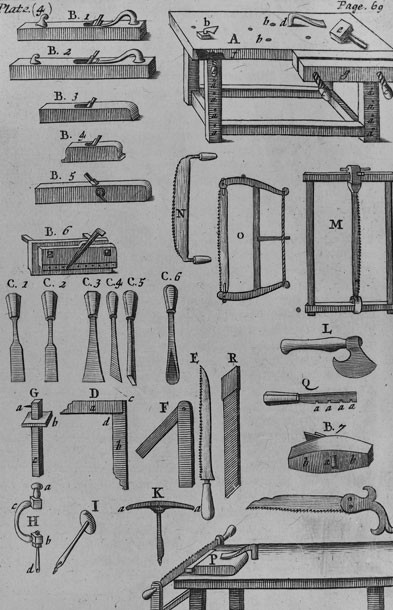
Workbench and tools illustrated on page 69 in the third edition of Joseph Moxon, Mechanick Excercises; or the Doctrine of Handy-works (1703). (Courtesy, Winterthur Museum Library: Printed Book and Periodical Collection.)

Holdfasts and bench hook being used to position a board for planing. (Photo, Gavin Ashworth.)
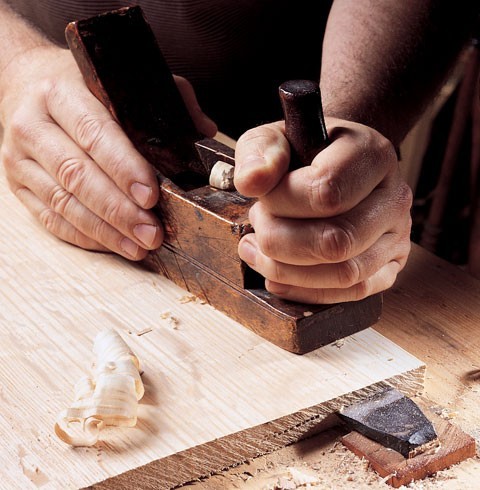
Bench hook being used to hold stock for planing. (Photo, Gavin Ashworth.)

Detail of the bench hook marks on a seventeenth-century English box.
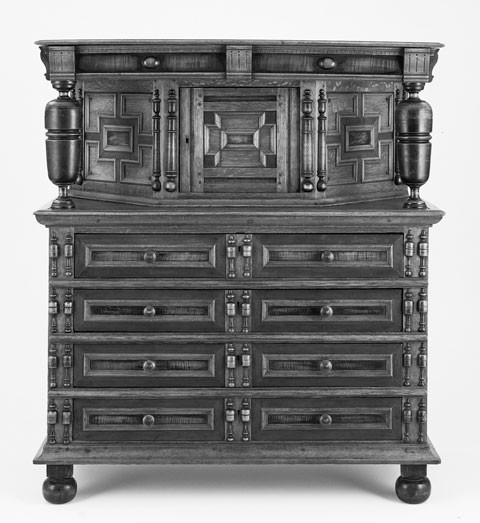
Cupboard, Boston, Massachusetts, 1675–1690. Oak, walnut, maple, chestnut and cedar with oak and white pine. H. 55 5/8", W. 49 1/2", D. 21 3/4". (Chipstone Foundation; photo, Gavin Ashworth.)
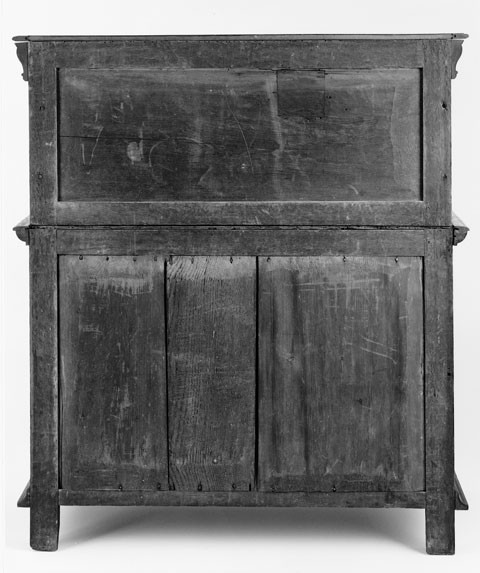
Back of the cupboard illustrated in fig. 11. The smoothing plane marks appear as concave undulations on the back panels.

Randle Holme, drawing of a smoothing plane, England, ca. 1688. (Courtesy, ©British Library Board.)
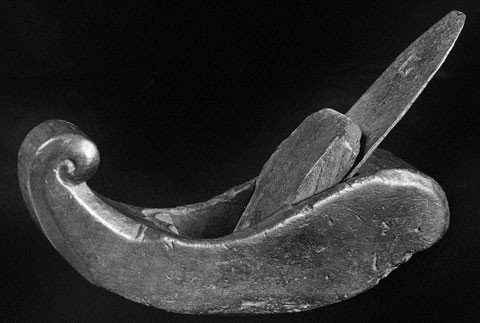
Smoothing plane, possibly New England, 1630–1700. Fruitwood and iron. L. 6 7/8". (Courtesy, Peabody Essex Museum.)
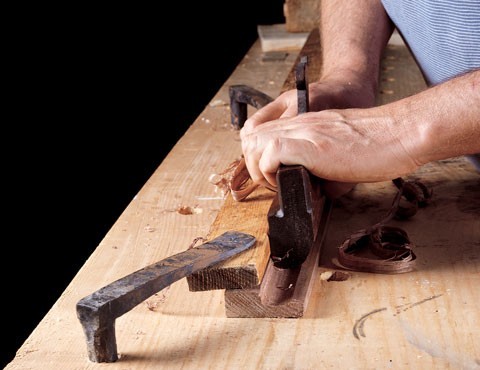
“Round” plane being used to mold a strip of wood to be cut into pieces for corbels like those on the cabinet illustrated in fig. 2.

Detail of the right corbel and side of the cabinet illustrated in fig. 2. (Photo, Gavin Ashworth.)
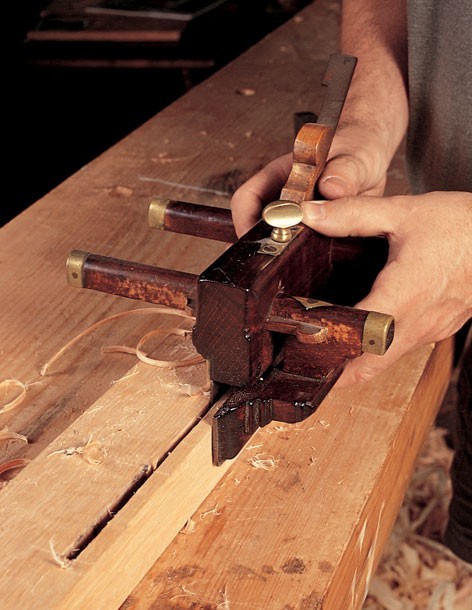
Plow plane being used to cut a groove in a framing member.
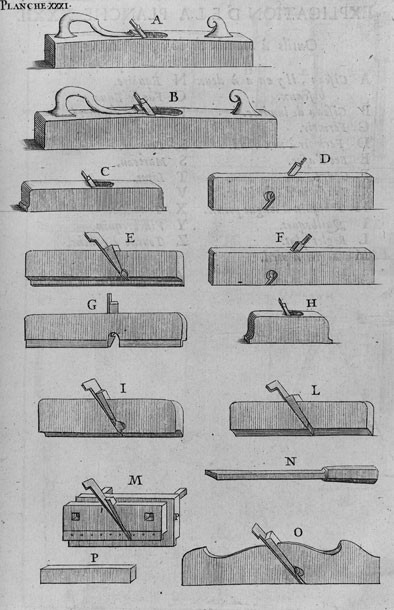
Planes and mortise chisel illustrated on plate 21 of Andres Felibien’s Des Principes de l’Architecture (Paris, 1676). (Courtesy, Winterthur Museum Library: Printed Book and Periodical Collection.) The plow plane is designated “M”.

Detail of the door of the cabinet illustrated in fig. 2 showing the plowed groove.
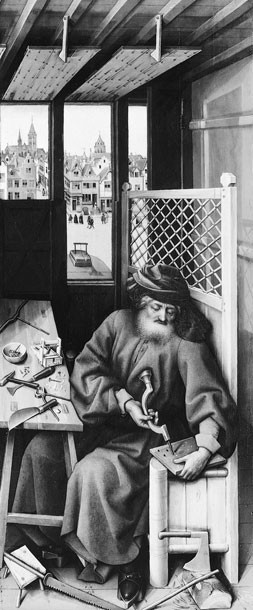
Detail of Annunciation Tryptich by Robert Campin and an assistant (possibly Roger van der Weyden), Netherlands, 1406– 1444. Oil on panel. Braces like the one shown here are still used today. (Courtesy, Metropolitan Museum of Art.)
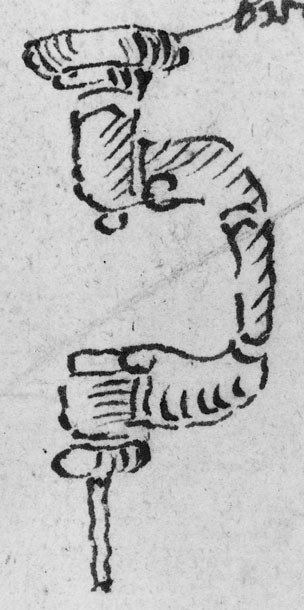
Randle Holme, drawing of a brace and bit, England, ca. 1688. (Courtesy, ©British Library Board.)

Detail showing the cross-section of a pair of the half-columns on the cabinet illustrated in fig. 2.
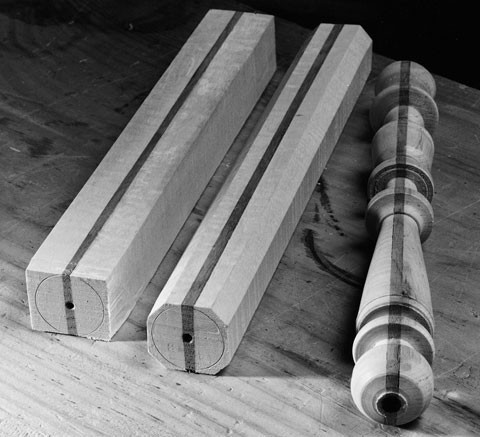
Turning blank for half-columns and completed workpiece.

Chest attributed to John Thurston, Dedham or Medfield, Massachusetts, 1640–1650. Oak with pine. H. 31 3/8", W. 47 3/4", D. 21". (Courtesy, Museum of Fine Arts, Boston; Otis Norcross Fund.)

Detail of a carved panel on the chest illustrated in fig. 24.
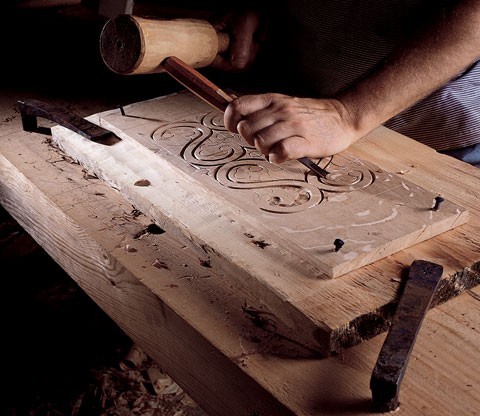
Side of a cabinet being carved. The workpiece is nailed to a board secured to the bench with holdfasts. The carving design duplicates that on the side of the cabinet illustrated in fig. 2.
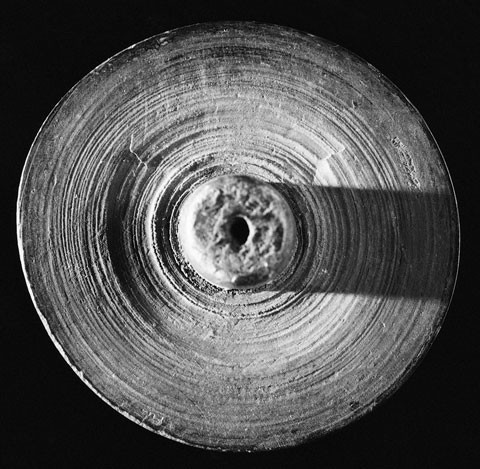
Detail of the left pillar of the cupboard illustrated in fig. 11.
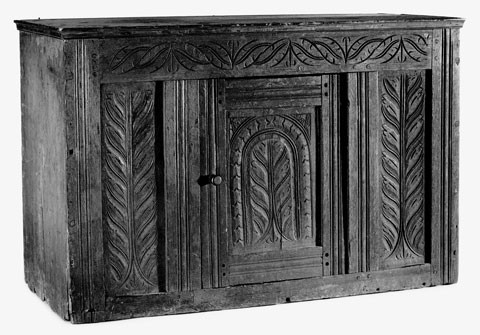
Fragment of a cupboard attributed to the Savell shop, Braintree, Massachusetts, 1640–1670. (Courtesy, Winterthur Museum; photo, Gavin Ashworth.)

Detail of the door frame of the cupboard illustrated in fig. 28, showing the offset of the draw-bored holes.
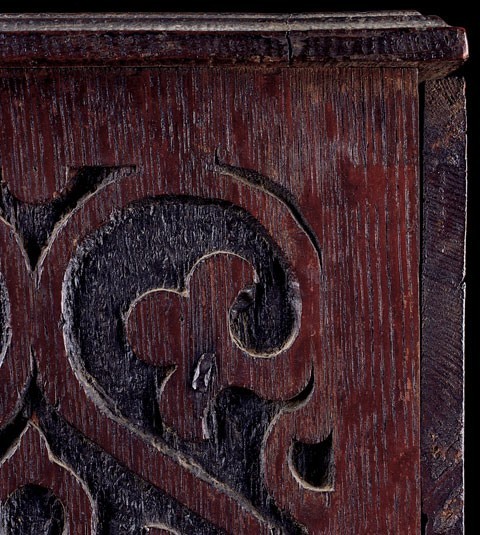
Detail of the cabinet illustrated in fig. 2, showing a nail driven through the side into an interior partition.

Detail showing the nails used to construct the drawers in the cabinet illustrated in fig. 2
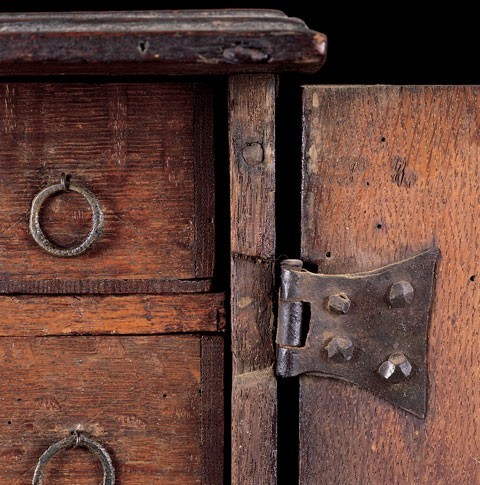
Detail showing the nail used to reinforce a split in the right side of the cabinet illustrated in fig. 2.
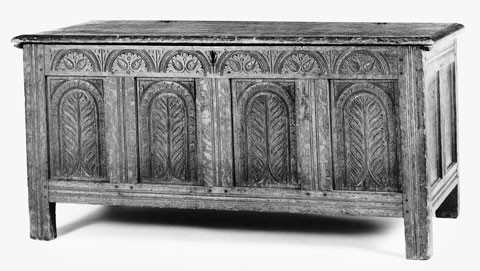
Chest attributed to the Savell shop, Braintree, Massachusetts, 1660–1680. Oak with white pine. H. 24 9/16", W. 51 1/2", D. 20 1/2". (Private collection; photo, Dan Gair.)

Chair table, southeastern Massachusetts, 1650–1700. Oak with pine and maple. Dimensions not recorded. (Private collection.)

Detail showing a mortising mistake on the chair table illustrated in fig. 34.

Chest attributed to John Norman, Sr., or Jr., Marblehead, Massachusetts, 1630–1680. Oak and pine. H. 27 3/4", W. 44 3/4", D. 20 3/8". (Chipstone Foundation; photo, Gavin Ashworth.)

Detail showing a mortising mistake on the chest illustrated in fig. 36.
